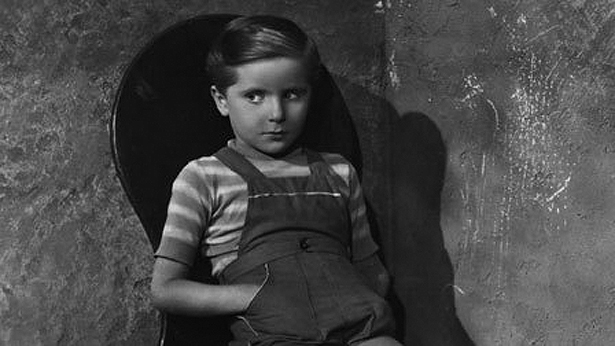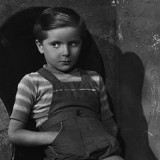 This cinematic masterpiece was filmed in Rome during the summer of 1942 before the Nazis arrival in October that started the occupation and devastation in the city. That’s why Rome in this film looks very clean, normal and tranquil – the serenity before the war storms broke out. Stylistically, the film belongs to the Transitional genre in Italian cinema that occured before the Neorealism. It’s considered a melodrama and to some extent a response to the sugar-coated Hollywoodian cinema of that period.
This cinematic masterpiece was filmed in Rome during the summer of 1942 before the Nazis arrival in October that started the occupation and devastation in the city. That’s why Rome in this film looks very clean, normal and tranquil – the serenity before the war storms broke out. Stylistically, the film belongs to the Transitional genre in Italian cinema that occured before the Neorealism. It’s considered a melodrama and to some extent a response to the sugar-coated Hollywoodian cinema of that period.
Director Vittorio De Sica tells the story of a well-to-do family in Rome through the eyes of a 5-year old boy (Luciano De Ambrosis) that is torn between the weakness of his mom (Isa Pola) who keeps deserting him for her lover (Adriano Rimoldi) – and the father (Emilio Cigoli) who tries his best to keep the family together, yet fails miserably time after time. De Sica known for his sensible work with children (Shoeshine – 1946, Bicycle Thieves – 1948) provides a unique glimpse into how a small boy interprets the world of adults that surrounds him. Using low camera angles from the boy’s level, all adult characters look more dramatic and menacing. And what the boy sees is mostly weak, cold and egoistical women that let their heart or convenience come first on male figures’ expense. The only female protector is his housekeeper, Agnese (Giovanna Cigoli) that truly cares for his well-being.
The film is based on a novel by Cesare Giulio Viola where the story originally revolved around a Sicilian boy instead of Roman. And the boy’s name Pricò serves as a fine symbol for the boy’s precociousness as he explores the treacherous world of adults around him. The Criterion DVD includes a rare interview with Luciano De Ambrosis who played the boy. From almost 60 years of distance, De Ambrosis provides a remarkable testimonial to the work on the set, work with De Sica and a few observations about his favorite scenes in the movie.
Composer, Renzo Rossellini (brother of famed director Roberto Rossellini) offers a heart-pinching score with loads of emotions that paint vividly the enormous injustices inflicted on the boy, while at the same time uses patches of sounds coming from the reality itself, usually much happier (radio tunes from a neighbor’s window), to further depicts the gulf between the sad reality of the family and the parallel normal lives around them.
In this film you will also find De Sica’s tremendous human and wanton sensibilities. In some instances you can easily transform characters and contexts into classic paintings, like the singing cook, the boy who dozed off on the hip of hay while his horse marches on.

This technique coupled with his usage of layered mini-activities such as when the boy was brought back by the carabinieri (cops), there are 2 preceding elements of a couple that walks by and another couple on a carriage that passes by in the opposite direction – offer a solid capture of a living and breathing reality where characters and objects are constantly mingling even if they don’t have anything to say directly about the scene.
There is also an interesting use of “doors” throughout the film to convey either modes of danger as in the case of the nosy neighbor that keeps peeking around, the lover who comes knocking in, the postman bringing news – and as representation of shelter when Agnese, the housekeeper manages the door opening and closing to fend off all these negative elements from the boy and his father.
The film didn’t find success at the time, as the occupation broke out and people where busy surviving. That said, it’s a classic time capsule with all the melodramatic trappings, so make sure your handkerchief is handy.


“This cinematic masterpiece was filmed in Rome during the summer of 1942 before the Nazis arrival in October that started the occupation and devastation in the city. That’s why Rome in this film looks very clean, normal and tranquil – the serenity before the war storms broke out.”
Somebody needs to re-open the history books. The Germans (not the Nazis) occupied Italy on 12 September 1943, when the puppet state Italian Social Republic was established. As for the serenity in Rome before the “war storm” breaks out, the city (and the entire country) had been involved in WW2 since the day the war was declared, 10 June 1940.